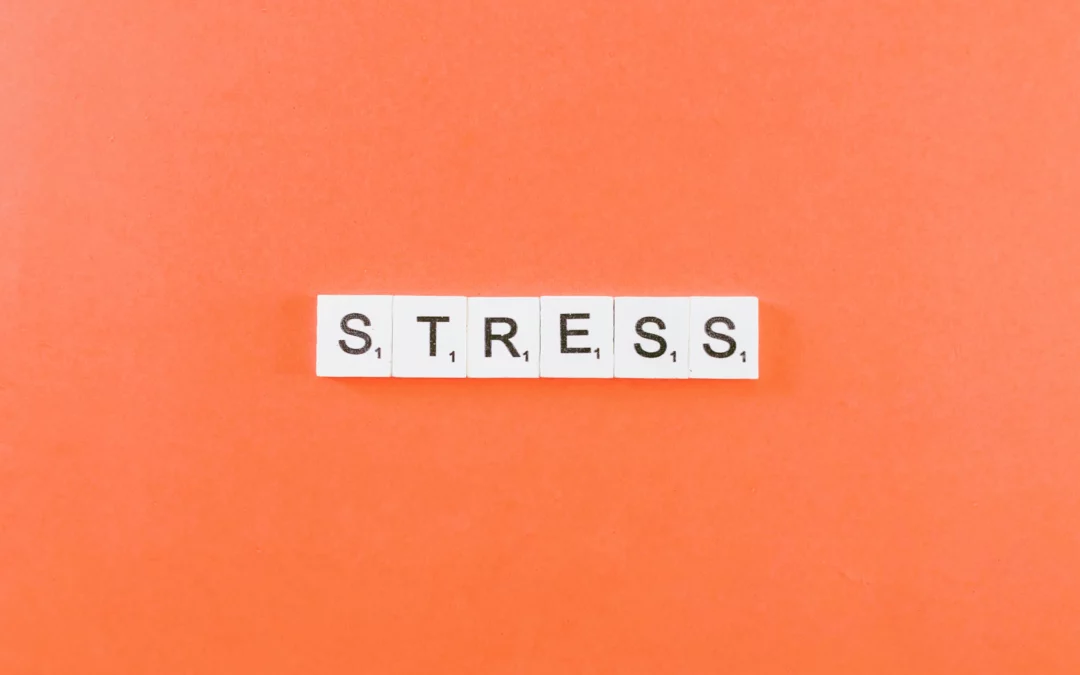Stress is clearly a common experience for many people. And, stress can lead to a wide range of physical and mental health symptoms. If left unmanaged, these symptoms can progress into a variety of illnesses and diseases. In fact, stress is the leading cause of many chronic health conditions. Given its prevalence in society and its influence on our health, it is important to find ways to manage stress and its symptoms.
One approach to managing stress is myofascial release therapy (MFR). Simply put, MFR is a therapeutic, hands-on technique that releases restricted connective tissue. There are a variety of benefits to be had by using MFR for stress reduction. We will touch on many of them throughout this blog. Read along to learn more about stress, its impact on our bodies, and how MFR can help alleviate stress and stress-related symptoms.
If stress is short-lived, it is often categorized as acute stress. (1) When we are in distress, our acute stress response is meant to protect us. When we perceive a threat, our ‘fight or flight’ response is triggered.

Our ‘fight or flight’ response typically fades once the perceived threat is gone. But, what happens if we are feeling stressed day after day? Stress that occurs day after day is often called chronic stress. When we are chronically stressed, our bodies tend to stay in their ‘fight or flight’ state. Overtime, this can have drastic effects on the health of our bodies and our minds.
As our bodies and minds experience stress, the tissues of our bodies respond. They actually begin storing stress in the form of tension, muscle knots, and tightness. Have you ever noticed mysterious aches and pains in times of stress? If you have, it is likely your body trying to cope with the pressure you are feeling. Overtime, this can lead to pain and dysfunction. For example, the fascia in our bodies, which is a web of connective tissue, can become ‘bound down’ when we are experiencing emotional or physical stress. This restriction of our fascia can cause many things to occur. It also increases our risk for musculoskeletal pain and injury.

In its normal state, our fascia is relaxed and wavy. (4) It can stretch and move without restriction. But, when we are experiencing stress, our fascia can become tight or restricted. This is often described as the fascia becoming ‘bound down’ or adhered to the structures it is surrounding. It can be helpful to think of this adhering as a hardening, similar to how liquid water can harden to ice. When fascia becomes tight or restricted, it can change the way our bodies are able to function. We may notice changes in our mobility and stability. We may experience decreased joint range of motion, muscle knots, poor blood flow, numbness and tingling, as well as pain.
Adhered and restricted fascia can decrease our ability to cope with stress. Remember that vicious cycle that was mentioned above? Stress may be stored in the body as restricted fascia. Restricted fascia can exert tension-related forces of up to 2,000 pounds per square inch. (4) This excess pressure produces pain and dysfunction. And, that pain and dysfunction can further increase our stress.

MFR therapists release restrictions in our fascia by applying gentle, sustained pressure to areas of restricted or ‘bound down’ tissue. While this pressure is applied, the MFR therapist may also provide a gentle stretch. To imagine this approach, it can be helpful to think of pulling on a piece of taffy with light and constant pressure. The sustained pressure and stretch are held until the restricted tissue starts to release. Cellular changes in the tissue begin after 90 to 120 seconds. But, it usually takes holding the pressure and stretch for 5-7 minutes or more for a full release to occur. This is due to something called the piezoelectric effect.
The piezoelectric effect is a chemical and electrical shift that occurs in the cells of the restricted fascial tissue. The pressure applied by the MFR therapist causes a chemical reaction to occur in the tissue. This reaction is then converted by our cells into electrical charges. These charges have many benefits including pain relief, cell regeneration, and tissue repair. Harnessing the piezoelectric effect is just one way MFR treatments differ from traditional massage therapy or physical therapy approaches. It allows MFR treatments to enhance patient healing far more than other approaches.
MFR therapists use a slow and deliberate approach in their treatment sessions. This approach allows them to better sense and respond to the needs of their patients. As MFR therapists align with their patients, they are better able to assess areas of restriction. Throughout the treatment, a MFR therapist will sense and follow the fascia as it releases. This process is similar to ice unthawing – the fascia moves from a solid state back to one that is fluid, relaxed, and wavy. Working in this way allows the MFR therapist and patient to access and heal the root cause of pain and discomfort. Oftentimes, long held emotions, traumas, and stress are released as restricted fascia is relaxed and unwound.
MFR therapy recognizes that stress can appear in the body as tight or restricted tissue. Due to its holistic approach, it can help us reduce stress in multiple ways. Below are just some of the ways it can do so:
Releases restricted fascia: As mentioned above, stress can be stored in the body in the form of restricted fascia. By accessing fascial restrictions, a MFR therapist can help you release deeply rooted stress.

Reduces muscle tension and pain: When our fascia is restricted, our body is not able to function properly. Overtime, this can increase tension and pain. This increase in tension and pain will also increase our stress levels. Releasing restricted fascia helps us break the vicious cycle between stress and pain. Our bodies can return to their proper alignment and function which will decrease our tension, pain, and stress.
Improves circulation: When we are stressed, the body releases stress hormones that cause our blood vessels to constrict. This decrease in blood flow means less circulation of oxygen and nutrients. It also can cause increased tension and pain in our muscles. Because of its hands-on approach, MFR treatments naturally improve our blood flow. Additionally, releasing restricted fascia can help improve our circulation. This allows oxygen and nutrients to flow more freely to our muscles and tissues.
Promotes relaxation: MFR therapy can be a very relaxing experience. The slow, sustained pressure used during MFR treatments can stimulate the part of our nervous system that focuses on resting and digesting. This part of our nervous system tells our heart rate to slow, our breathing to become deep and regular, and tells our muscles to relax. This part of our nervous system also helps to counter balance our ‘fight or flight’ response. As we promote relaxation in the body, we are also able to decrease stress.
Impacts the vagus nerve: As mentioned above, when we experience chronic stress our body can become stuck in its ‘fight or flight’ mode. This can have a negative impact on a very important nerve in the body called the vagus nerve. The vagus nerve is part of our nervous system that promotes rest and relaxation. The vagus nerve and our fascia are also closely interconnected. By releasing restricted fascia, we restore the ability for the vagus nerve to function properly. This can help promote balance in our nervous system and reduce stress.
Enhances the mind-body connection: MFR treatments can help you become more aware of your body and your mind. Overtime, you may be able to identify which parts of your body tend to hold the most stress. You may also begin to unearth some of the root causes or your stress or discomfort. As you enhance your mind-body connection, you will be better equipped to manage stress in the future and improve your overall well-being.
Complements other stress-reduction strategies: MFR therapy can be used alongside other strategies for managing stress. Some of these strategies include exercise, meditation, and mindfulness practices. By using MFR therapy in collaboration with other stress-reduction techniques, you may be able to find additional and more effective stress relief.

In a world filled with stressors, finding effective ways to reduce and manage stress is essential. Without it, it would be difficult for us to optimize our health and wellness. MFR therapy offers a holistic approach to stress reduction by targeting both the physical and emotional aspects of stress. Whether you are dealing with acute or chronic stress, MFR therapy offers a variety of benefits. From releasing deeply rooted stress to promoting relaxation, MFR therapy enhances our connections to our bodies and minds. Find a MFR therapist near you to learn more about the many ways MFR therapy can help us unwind and reduce stress.
References:
- Boyd, D. (2022). Daily Life – The American Institute of Stress. The American Institute of Stress. https://www.stress.org/daily-life#:~:text=55%25%20of%20Americans%20are%20stressed,of%20143%20countries%20is%2035%25
- Mariotti A. (2015). The effects of chronic stress on health: new insights into the molecular mechanisms of brain-body communication. Future science OA, 1(3), FSO23. https://doi.org/10.4155/fso.15.21
- Juett, T & Barnes, J. F. (1988). An introduction for the patient. https://myofascialrelease.com/downloads/articles/AnIntroductionForThePatient.pdf
- Elliott, J. (2003). Easing pain with myofascial release. News-line for Physical Therapists & PT-Assistants. https://myofascialrelease.com/downloads/articles/EasingPainWithMyofascialRelease.pdf
